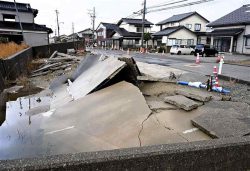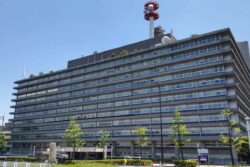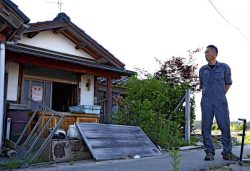Survey Finds Japan’s Noto Earthquake Survivors Less Optimistic; 30% Think It May Take Over 10 years If Ever to Return to Pre-Quake Lives
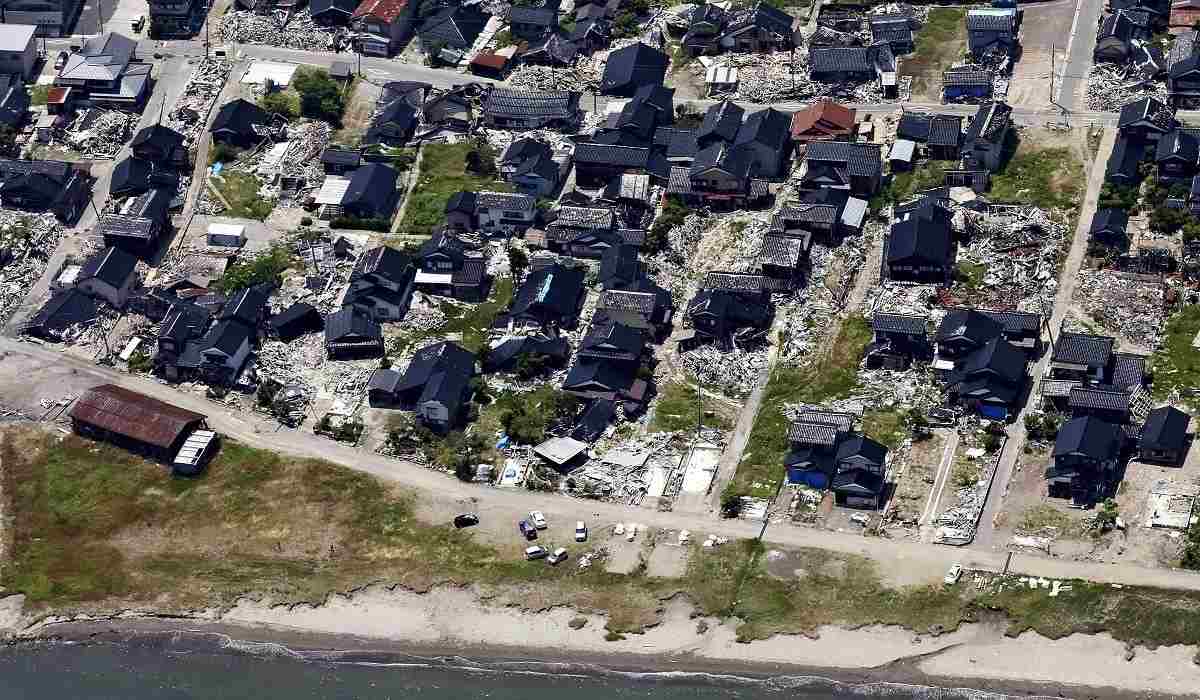
An aerial view of the tsunami-devastated area in Suzu, Ishikawa Prefecture, is seen on June 15.
13:38 JST, July 2, 2024
More than 30% of Noto Peninsula Earthquake survivors either think it would take more than 10 years to return to their pre-quake lives, or would never happen, according to a recent Yomiuri Shimbun survey.
The percentage to the question, which asked how long they think it would take to return to a pre-quake life, increased by about 1.5 times compared to a previous survey conducted between Jan. 23-26 — about a month after the quake — showing a situation where many quake survivors have little hope about rebuilding their lives.
The recent survey was conducted on the same people who responded to the January survey, which was conducted on 133 people affected by the disaster in Ishikawa Prefecture. Ninety-six people responded to the recent survey, which was conducted between June 6-11 by phone or in person.
In the June survey, 10 people said it would take more than 10 years to return to their pre-disaster life, and 21 people said they did not think they could resume their lives. Eleven people had said in the January survey that it would take over 10 years, while only 10 people had said it would never get back to their pre-disaster life. The amount of respondents who gave the latter response was almost double from the January survey.
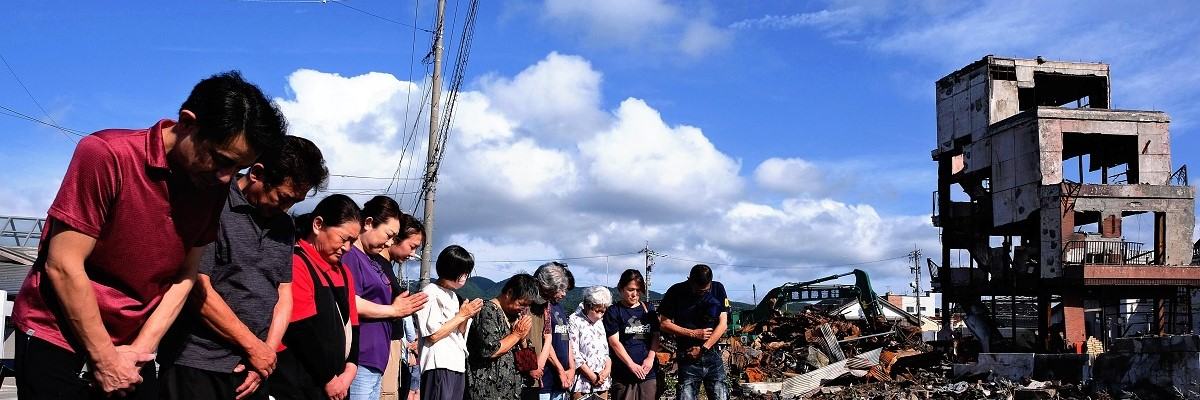
People offer a silent prayer at the site of Wajima Morning Market in Wajima, Ishikawa Prefecture, at 4:10 p.m. on Monday. The market was burnt down when the earthquake hit the Noto Peninsula on Jan. 1.
Behind such perspectives is slow progress on the demolition of damaged houses — a prerequisite for rebuilding their lives. The Ishikawa prefectural government expects to demolish about 22,000 houses by the end of October 2025. As of the end of June, however, only 1,076 houses were demolished, including those demolished at the owners’ own expense.
Many of the respondents gave comments for swift demolition using public funding, with a thirty-something year old Nanao woman saying, “We can live in temporary housing for no more than two years, but it takes time to rebuild a house.”
The slow restoration of infrastructure that supports respondents’ livelihood also has frustrated them. “I can’t work unless I can use the port,” a man in his 70s from Wajima said, while a man in his 50s in Shika said, “The roads have not been restored, so it takes time to commute.”
As for assistance expected from local governments, 41 people called for housing reconstruction costs, while 23 people responded with living expenses.
"Society" POPULAR ARTICLE
-

M4.9 Earthquake Hits Tokyo, Neighboring Prefectures
-

Israeli Tourists Refused Accommodation at Hotel in Japan’s Nagano Pref., Prompting Protest by Israeli Embassy and Probe by Prefecture
-

M7.5 Earthquake Hits Northern Japan; Tsunami Waves Observed in Hokkaido, Aomori and Iwate Prefectures
-

Tsukiji Market Urges Tourists to Avoid Visiting in Year-End
-

High School in Kyoto Says Students Shoplifted during Recent School Trip to Bali, Indonesia
JN ACCESS RANKING
-

Tokyo Economic Security Forum to Hold Inaugural Meeting Amid Tense Global Environment
-

Keidanren Chairman Yoshinobu Tsutsui Visits Kashiwazaki-Kariwa Nuclear Power Plant; Inspects New Emergency Safety System
-

Imports of Rare Earths from China Facing Delays, May Be Caused by Deterioration of Japan-China Relations
-

University of Tokyo Professor Discusses Japanese Economic Security in Interview Ahead of Forum
-

Japan Pulls out of Vietnam Nuclear Project, Complicating Hanoi’s Power Plans


